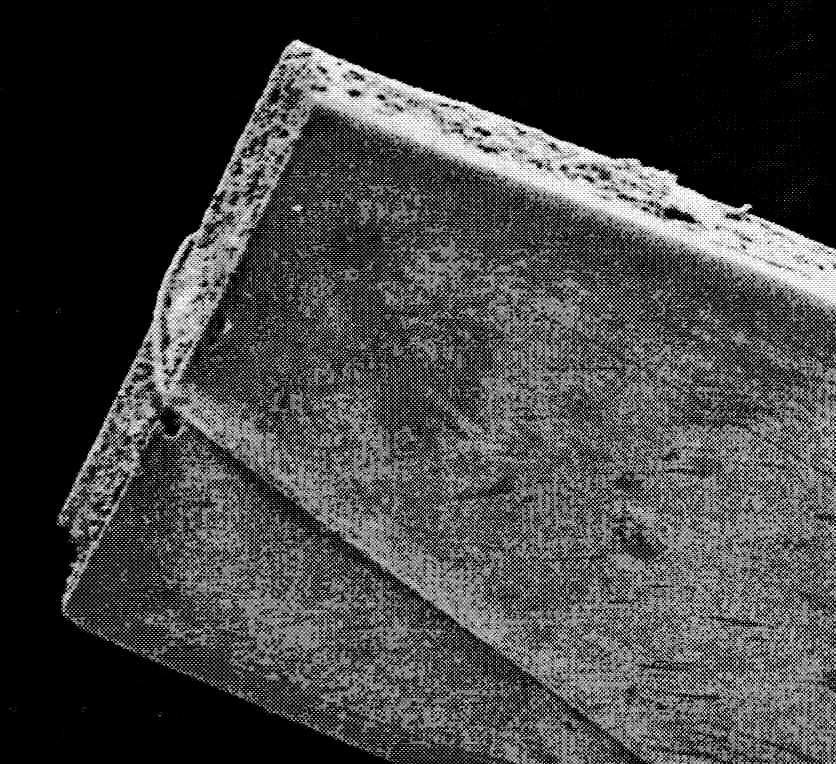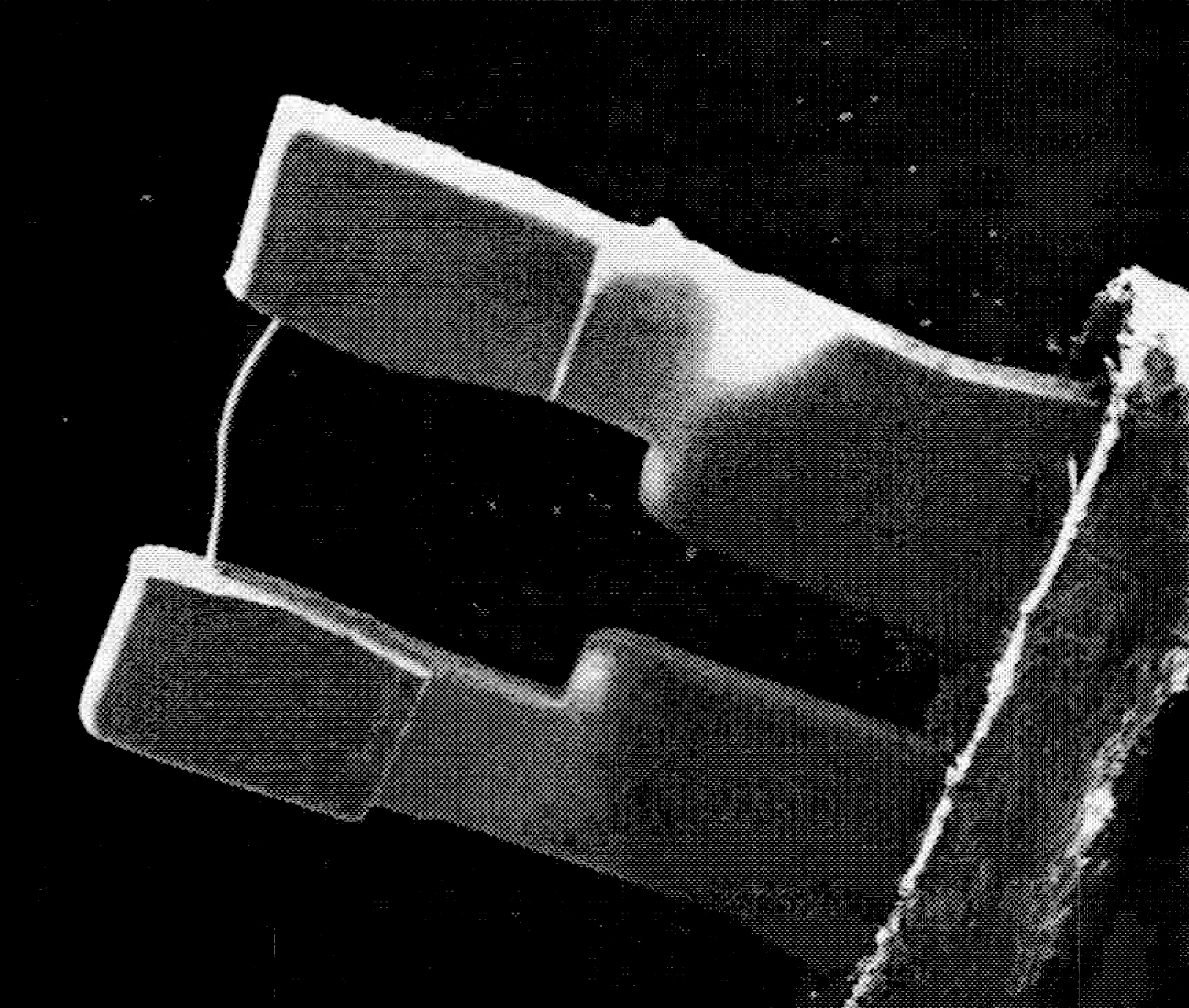Electric Igniter Architectures and Operation
 |
 |
 |
| Electron Micrographs of bridgewire types | ||
Electric Igniter
An Electric Igniter consists of two parts; an energetic component (also called the fusehead) and an interface component (such as a leadwire, a cable, a system or assembly, an electric board, an electronic board or electric capacitance) allowing a connection to a power source for the initiation of the Electric Igniter.
Fusehead
A Fusehead consists of two parts: a bridgewire and a pyrogen. The bridgewire is the heating element diffuser in the form of a loop of a microns-thin nichrome, copper or chromium wire between the electrical circuit polarities. The bridgewire is encased in the pyrogen or pyrotechnic initiation composition.
A vast range of Fuseheads is offered with varying operational characteristics. The fusehead can be embedded in a cylinder providing a directional output, a protection from environmental interferences or a connective interface to a system.
Activation
When the minimum specified all-fire electric current passes through the bridgewire, the resistive heating causes the element to rise above the ignition temperature of the pyrogen. The pyrogen then begins to burn, producing fast flames, hot particles, and high-pressure hot gases.
The key specific parameters of an Electric Igniter are the resistance of the bridgewire, the recommended minimum all-fire current, and the maximum no-fire current. A range of electrical sensitivities is offered up to the recognized 1A1W no-fire condition.
The specified test current level is also a critical factor and is typically used to safely test a system or a setup. This is done by sending a current, which is limited to well below the no-fire current, to detect common problems such as short circuits and disconnected open circuits. Excessive circuit tests at the recommended test current and performing tests at the no-fire current will damage the device and alter its characteristics and performances.
Ballistic Output
Electric Igniters are made from a proven range of propellants, ensuring repetitive accurate response time and reliable outputs. Individual devices have operation times in the range of 0.5 milliseconds to 10 seconds, and pressure outputs from 60 to over 400psi.
Variations can be made in firing characteristics, output charge and overall configuration to accommodate customer requirements. For these and other possible alterations please consult Energetix Solutions. Click here


